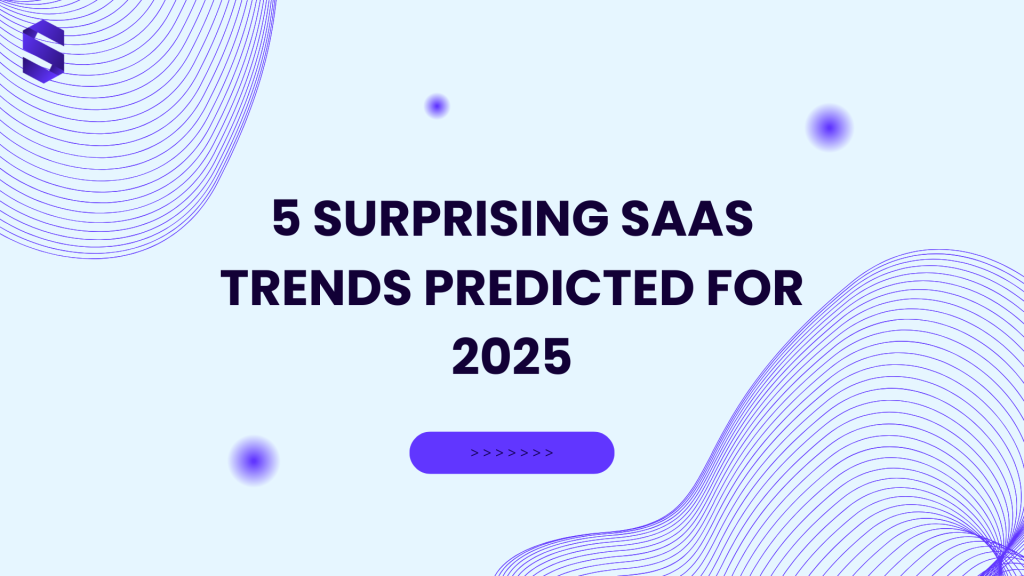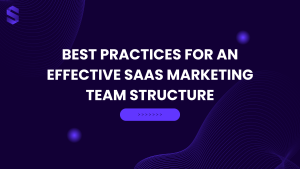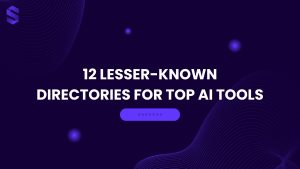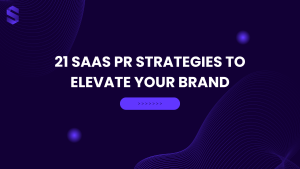The SaaS world is changing fast. Cloud computing and artificial intelligence are leading the way. By 2025, the SaaS market will hit over $250 billion, up from $195 billion in 2023.
Looking to 2025, exciting trends are coming. Machine learning and AI are becoming common. Apps with these features see a 10-25% revenue boost.
Vertical SaaS solutions for specific industries are also on the rise. These solutions offer better efficiency and follow industry rules. Low-code and no-code platforms are making software development easier for everyone.
Key Takeaways
- SaaS market projected to exceed $250 billion by 2025
- AI integration boosting app revenues by 10-25%
- Vertical SaaS solutions gaining prominence
- Low-code and no-code platforms simplifying development
- Increased focus on cybersecurity and data protection
- Shift towards usage-based pricing models
- Growing importance of API integration in SaaS strategies
The Rise of AI-Powered SaaS Solutions
Artificial intelligence is changing the Software as a Service (SaaS) world. By 2025, AI will change how businesses work and talk to customers. This change will make things better for users and help with data analysis.
How AI Enhances User Experience
AI is making SaaS solutions better for users. Netflix uses AI to suggest 75% of what to watch, making users happy. Salesforce’s Einstein AI makes marketing messages better, increasing user interest by 20%.
Natural Language Processing (NLP) is also changing things. Drift’s virtual assistant helps get more leads, up by 20%. Zendesk says NLP in customer support can cut response times by up to 70%. These changes make SaaS platforms easier to use.
AI for Data Analysis and Insights
Machine learning turns data into useful insights. Companies using AI for predictive analytics see a 25% boost in efficiency and a 30% cut in costs. Tableau’s AI engine shows data trends and predicts the future, helping businesses make smart choices.
In cybersecurity, AI is very helpful. Darktrace finds unusual network activity with AI. IBM’s Watson for Cyber Security cuts response times by up to 90%. These tools are key as keeping data safe becomes more important in SaaS.
As we get closer to 2025, AI in SaaS will keep growing. It will give businesses tools for growth, efficiency, and new ideas. AI will make the SaaS industry better for users and data analysis.
Integration of No-Code and Low-Code Platforms
The SaaS world is changing fast. No-code and low-code tools are leading the way. They’re changing how we make and use software.
No-code and low-code platforms are changing the game—allowing businesses to develop and launch faster than ever. Want to explore how these tools can streamline your operations and boost your efficiency? Let’s create a strategy that fits your needs—schedule a free consultation today!
Empowering Non-Technical Users
No-code tools let anyone make apps, even if they can’t code. This is a big deal for all kinds of businesses.
- Drag-and-drop interfaces make app making easy
- Visual builders help make prototypes fast
- Pre-built templates speed up making apps
Streamlining Development Processes
Low-code tools offer a mix of visual and coding. This makes making apps faster. It’s great for companies that want to be quick to market.
| Development Approach | Time to Market | Cost Efficiency |
|---|---|---|
| Traditional Coding | 3-6 months | High |
| Low-Code | 1-3 months | Medium |
| No-Code | 2-4 weeks | Low |
No-code and low-code with cloud computing are changing SaaS. By 2025, 70% of new apps will use these tools. This will make making software faster and easier.
As more businesses use these tools, we’re seeing a big change. The future of SaaS is about making software easy for everyone. It’s about being quick and flexible.
Increased Focus on Cybersecurity Measures
As SaaS use grows, so does the focus on keeping data safe. Cybercrime makes over $8 trillion a year. This makes it crucial for businesses to protect themselves.
The SaaS market is expected to grow to $908.21 billion by 2030. This shows how important it is to have strong security.
Trends in SaaS Security Protocols
Now, we use end-to-end encryption, multi-factor authentication, and zero-trust models. These steps help fight off threats fast. Cybersecurity measures also include AI to catch smart attacks.
Strategies for Protecting User Data
SaaS providers focus on keeping data safe to follow global rules. They use:
- Strong identity and access management
- Improved edge security for devices
- Cloud computing for better security
- Data analytics to find odd patterns
These steps help keep data safe. They also make customers trust the service more. With more people online, keeping data safe is more important than ever.
| Security Measure | Adoption Rate | Effectiveness |
|---|---|---|
| Multi-Factor Authentication | 85% | High |
| End-to-End Encryption | 78% | Very High |
| Zero-Trust Model | 62% | High |
| AI-Driven Threat Detection | 55% | Very High |
By 2025, SaaS will power 85% of business apps. It’s key to add these security steps. Companies must keep up with new threats to grow and keep customers.
Expansion of Vertical SaaS Applications
The SaaS world is changing fast. Vertical SaaS is becoming a big deal in saas trends 2025. It’s making businesses use cloud computing and artificial intelligence in new ways.
Why Industry-Specific Solutions Matter
Vertical SaaS apps are made for specific industries. They are different from general software. These apps offer:
- Specialized workflows
- Faster implementation
- Better compliance with industry regulations
The vertical SaaS market is growing fast, by 25% every year. 55% of these apps focus on following rules. This shows more people want tools made for their industry’s needs.
Examples of Successful Vertical SaaS
Healthcare and finance are leading in using vertical SaaS. In healthcare, apps help with scheduling and keeping patient records. Finance gets tools for managing risks and following rules.
By 2025, 80% of SaaS apps will use AI. This will make vertical solutions even more powerful. AI and industry knowledge together will change how businesses work.
The Adoption of Subscription-Based Pricing Models
Subscription models are changing the software world, especially in cloud computing. Looking ahead to 2025, we see a big move from one-time payments to flexible subscriptions.
Benefits for SaaS Companies and Users
Subscription-based pricing helps SaaS companies get steady money. It makes it easier to plan for the future and sell more. Users get to start with low costs and always have the newest stuff and help.
Comparison with Traditional Pricing Strategies
Subscription models are more flexible and fair. Let’s look at how much companies spend on software each year:
| Company Size | Annual Software Spend | Spend per FTE |
|---|---|---|
| 0-20 employees | $121,336 | $8,000 |
| 50-100 employees | $193,716 | $2,583 |
| 100-200 employees | $251,119 | $1,741 |
Smaller companies spend more on software per worker. This shows how subscriptions can grow with businesses. It’s a smart choice for companies of all sizes.
Emphasis on Customer Success Management
Customer success management is changing the game for SaaS businesses. Data analytics and artificial intelligence are making it easier to keep and engage customers. Customer success trends are moving towards more personal experiences and help before customers ask.
Importance of Customer Retention
Keeping current customers happy is key for SaaS growth. It’s cheaper to keep a customer than to get a new one. Selling to current customers works better than trying to sell to new ones.
Tools for Enhancing Customer Engagement
AI tools are changing how we talk to customers. They use machine learning to understand what customers need and offer help. Some top tools include:
- Vitally: Serves industries like Accounting, Finance, and Human Resources
- ChurnZero: Used by companies like Freewill and Boulevard
- Accord: Trusted by Figma, Stripe, and Teamwork
These tools help make onboarding smooth, offer help before it’s asked, and keep customers happy.
| Customer Success Tool Feature | Impact on Business |
|---|---|
| Data Analytics & Insights | Anticipates and addresses issues proactively |
| Automation Capabilities | Frees up time for strategic activities |
| Integration with Existing Systems | Avoids data silos and inefficiencies |
| Scalability | Ensures future growth and effectiveness |
By using these tools and focusing on customer success, SaaS companies can build stronger bonds. This reduces customer loss and helps them grow in a tough market.
The Growth of Micro-SaaS Businesses
Looking ahead to 2025, Micro-SaaS businesses are growing fast. They are changing how we use cloud computing and work together from afar.
What is Micro-SaaS?
Micro-SaaS means small software solutions made by a few people. They start small and grow by word-of-mouth and smart marketing. For example, Prerender.io started small and grew big without needing outside money.
Benefits and Challenges of Micro-SaaS
Micro-SaaS has many good points:
- It costs less to start
- There’s less competition in specific areas
- Customers stick with them
- They can work in flexible ways
But, there are also tough spots. Micro-SaaS needs to focus on what customers want. They must keep improving their products. They also need to use content marketing and SEO to find and keep customers.
The future is bright for Micro-SaaS. SaaS spending is set to hit $232 billion in 2024. By 2025, SaaS will power 85% of business apps, up from 70% in 2023. This makes Micro-SaaS a big deal in cloud computing and remote work.
Transition to Sustainable SaaS Practices
Looking ahead to 2025, sustainability is a big deal in cloud computing. SaaS companies are now using eco-friendly ways to make and run their software. This not only helps the planet but also saves money and makes their brand look good.
The Role of Sustainability in Software Development
Sustainable software making is becoming more popular in SaaS. Companies are using green coding to use less energy. This fits with the need for eco-friendly cloud computing solutions.
- Optimizing code for energy efficiency
- Using sustainable data storage solutions
- Implementing energy-efficient algorithms
Eco-Friendly Practices in Operations
SaaS companies are also working on green operations. They’re using clean energy for data centers and cutting down on carbon from software delivery. By 2025, we’ll see more SaaS companies focusing on these green steps:
| Practice | Impact |
|---|---|
| Renewable energy use | Reduced carbon emissions |
| Energy-efficient data centers | Lower power consumption |
| Carbon footprint tracking | Improved sustainability metrics |
Artificial intelligence is helping make energy use better and predict environmental effects. This AI help in green practices will change the SaaS world by 2025.
“By 2030, we aim for 24/7 carbon-free energy across all our operations,” – Google’s sustainability commitment.
Switching to green SaaS is key for both the planet and business. As people care more about the environment, green SaaS will get more love and loyalty in the future.
Personalization and Customization in SaaS
The SaaS industry is changing fast. Personalization and customization are leading the way. By 2025, SaaS platforms will offer tailored experiences based on what each user likes and does. This change is making businesses and software interact in new ways.
User-Centric Design Approach
SaaS companies are focusing on making users happy. They use artificial intelligence and machine learning to understand users. This helps them give users what they want.
A study by McKinsey shows that being good at personalization can really help. It makes customers happier and more loyal.
- 69% of consumers like personalization if they agree to share data
- Personalized messages can make more money, 10-40%
- Personalized marketing can increase sales by 10-15%
Tools for Tailoring User Experience
Data analytics are key to making experiences better. SaaS platforms use advanced tools to understand and help users. They make dashboards, workflows, and product suggestions just for each user.
Forbes says 61% of companies use AI for better emails. And 55% use AI for personalized services like product suggestions. These tools help keep users interested and loyal.
“Effective data management and analysis are essential for accomplishing goals in the current business environment.” – Integrate
The SaaS sector is growing fast, expected to hit $232 billion by 2024. Personalization is key to standing out. By focusing on users and using advanced tools, SaaS companies can offer better experiences.
The Impact of Remote Work on SaaS Development
Remote work has changed the SaaS world a lot. It’s now easier to work together from anywhere. The need for cloud computing has grown a lot. By 2025, 85% of business apps will be SaaS, showing how much we rely on remote tools.
Changes in Collaboration Tools
Remote work has led to new tools for working together. We now have virtual whiteboards and better video calls. These tools help teams work well, even if they’re far apart. This growth is making the SaaS market huge, expected to hit $818.80 billion by 2029.
Shifts in SaaS Market Demand
Remote work has opened new doors for SaaS companies. More companies are using SaaS for its flexibility. The productivity segment is growing fast, with a 10.6% CAGR from 2022 to 2028. As we move to hybrid work, SaaS trends for 2025 will focus on AI and personalization for remote work.
The SaaS landscape is evolving rapidly, and staying ahead of trends like AI, no-code, cybersecurity, and hyper-personalization is key to success. Whether you’re looking to optimize your current strategy or scale with cutting-edge solutions, we’re here to help. Let’s discuss your SaaS growth strategy—contact us today!
FAQ
What is the projected size of the global SaaS market by 2025?
The global SaaS market is expected to grow a lot. It will reach over 0 billion by 2025. This is up from 5 billion in 2023. The growth is due to more people using cloud-based solutions and new technologies.
How is AI transforming the SaaS industry?
AI is changing SaaS in big ways. By 2025, almost every SaaS product will use AI. This makes services smarter, faster, and more efficient.
AI helps with things like automating workflows and predicting what users might need. It also makes customer support better with chatbots.
What are no-code and low-code platforms, and why are they important?
No-code and low-code platforms let non-tech people make apps easily. They’re great for small SaaS businesses. By 2025, 70% of new apps will use these tools.
They make making software faster and easier. This helps businesses grow quickly.
How is cybersecurity evolving in the SaaS industry?
Cybersecurity in SaaS is getting more important. By 2025, we’ll see more end-to-end encryption and multi-factor authentication. Zero-trust security will also become common.
These steps will make data safer. They will also help customers trust SaaS more. And they will make sure SaaS follows strict data privacy rules.
What is Vertical SaaS and why is it gaining popularity?
Vertical SaaS is software made for specific industries. It’s becoming more popular because it works better for those industries. It’s more efficient and follows industry rules well.
These solutions are often better than general SaaS. They meet the needs of specific industries well.
How are SaaS pricing models evolving?
SaaS pricing is changing. Instead of fixed prices, we’re seeing usage-based and hybrid models. These new models let businesses pay for what they use. This makes software more flexible and valuable.
This change is expected to grow a lot by 2025.
Why is customer success management becoming crucial for SaaS businesses?
Customer success is key for SaaS. It helps keep customers and makes them more valuable. Companies that personalize see more revenue.
AI helps make experiences more personal. Strategies focus on making onboarding easy and support proactive. This keeps customers happy and coming back.
What are Micro-SaaS businesses and what are their benefits?
Micro-SaaS businesses are small and often run by one person. They focus on specific needs. This makes them cheaper to start and less competitive.
They also offer flexible work options. This is why they’re becoming more popular.
How is sustainability becoming a priority in the SaaS industry?
SaaS is now focusing on being green. This includes using less energy in data centers and coding in an eco-friendly way. It also means using renewable energy.
These steps help the planet and save money. They also make SaaS companies look better to customers.
What is hyper-personalization in SaaS and how is it implemented?
Hyper-personalization in SaaS means making things just for each user. By 2025, SaaS will offer customized dashboards and product suggestions. This is thanks to AI and machine learning.
These tools analyze data in real-time. They make sure users get what they need most.
How has the rise of remote work influenced SaaS development?
Remote work has changed SaaS a lot. It’s made cloud solutions more popular. It’s also created a need for tools that help teams work together from anywhere.
Now, SaaS focuses on making tools for remote teams. This includes features like virtual whiteboards and better video calls.
What is the role of IoT integration in future SaaS trends?
IoT integration is a big trend in SaaS. It connects software with physical devices. This lets SaaS collect and analyze data in real-time.
By 2025, we’ll see more SaaS with strong IoT integration. This will help many industries work better.








